Intro: #YoR #RIFF
Wow, we're here: December 1 and my final post for 2019 — my own personal Year of Romance in Fantasy Fiction!I started a tad late in the year (in March, with The Lord of the Rings), and proceeded to alternate between older and newer works — noting all the while that the romances featured are my personal favorites, rather than any endeavor to comprehensively chart the genre!
In alternating between older and newer works, however, there has been a certain degree of 'charting', so in finishing up today, I'd like to have a brief look, over time, at the degree to which Fantasy has explored diverse expressions of romance.
It's only a post, not a thesis, so again I'm going to arbitrarily select a few sample works rather than undertake a comprehensive survey. But I hope it will still prove interesting, especially since we tend to regard diversity as a recent phenomenon.
.
Celebrating Difference:
 |
| Latest cover |
A few years back, I posted about this book on SF Signal, as part of the Fantasy Heroines That Rock My World series. The theme of the post was "sisterhood is powerful" because the friendships between women are one of the elements that make the story distinctive and compelling. Quite aside from the whole story being awesome imho: just sayin'!
Romance is also an important part of the story. The central romantic pair are Sun Wolf, a mercenary general, and Star Hawk, his second-in-command, a strong and capable warrior in her own right. She also plays as important a part in the story as Sun Wolf, rather than just being the "best supporting actress", charting similar ground to Patricia McKillip's Raederle (1980) in the Riddlemaster of Hed trilogy.
 |
| Original cover |
"And what about you?" he [Sun Wolf] asked Denga Rey as the gladiator stood, scarred arms folded, surveying their joint charges...
Her eyes mocked him. "Me? Oh, I'm in this only for the sake of the one I love."
He stared at her in surprise. "You have a man up in the mines?"...
The curved, black eyebrows shot up; then she burst into a whoop of delighted laughter. "A man?" she choked, her eyes dancing. "You think I'd do this for a man? Oh, soldier, you kill me." And she swaggered off, chuckling richly to herself."
Not the central romance, but a significant supporting relationship nonetheless.
Ten years later, in 1994, Irene Radford's The Glass Dragon featured a romantic relationship between three protagonists, Jaylor, a journeyman magician; Brevelan, a witch; and Darville, their country's enchanted crown prince. The consummation of their three-sided love, as well as their enduring friendship, is an important element in the resolution of the story.
Five years later again, in 1999, the relationship between the vintner, Sobran, and the male angel, Xas, formed the heart of Elizabeth Knox's acclaimed novel, The Vintner's Luck — a precursor to the paranormal focus that swept the Romance and Urban Fantasy genres ca. five to ten years later.
And perhaps to series like Teresa Frohock's Where Oblivion Lives, in terms of the angelic-demonic elements and homosexual love story (although otherwise they are very different books).
In 1984, Denga Rey and Amber Eyes' love was a supporting romance rather than the main romantic focus of The Ladies of Mandrigyn. In 2009, Malinda Lo's, Ash, was a re-imagining of Cinderella in which Ash falls in love with and ultimately chooses, Kaisa, a huntress, over both the mortal and fairy princes that are also core to the story.
Lo's second novel, Huntress (2011), which is set in the distant past of the same Fantasy world and centered in Chinese legend and culture, also focuses on a lesbian relationship between the heroines, Kaede and Taisin.
While in 2010, NK Jemisin gave Fantasy literature The Hundred Thousand Kingdoms — an epic fantasy in which the romance between Yeine Darr and the enslaved god, Nahadoth, the Night Lord, is not only front and center of the story, but one in which both central protagonists — and a significant number of others — are persons of color.
I'm going to finish in 2015 with The Labyrinth of Flame by Courtney Schafer, which is the culmination of her Shattered Sigil series. The two relationships that have been central to the preceding novels are the friendship between Dev, a caravan scout, and Kiran, a young magician, together with Dev's romantic relationship with Cara, a fellow caravan scout.
In The Labyrinth of Flame these two relationships come together into a three-sided partnership. In the Shattered Sigil series, such partnerships are an accepted part of the world's desert cultures, in particular.
(In case I've never shared this with you before, Courtney's world is strongly informed by the mountains and deserts of the south-western United States where's she's lived and done extensive climbing, and has a uniquely wonderful Fantasy vibe — again, imho. ;-) )
So there you have it, the wrap up to my Year of Romance (#YoR) in Fantasy fiction (#RIFF) with a peek at, and celebration of, a slice of of diversity and difference in the genre.
And this is just a slice, with novels such as Elizabeth A Lynn's Watchtower (1989), which I discussed here, also groundbreaking in terms of romantic diversity in Fantasy. But one can never mention All The Books — not and stay post-length!
What I hope I have done, is mentioned enough titles to convey that although the difference and diversity of romantic relationships may have come to the fore in our current era, it has been a distinct thread in Fantasy literature for some time.
And I'll be back on January 1, not only to wish you a Happy New Year but to reveal my year's theme for 2020. :-) Watch this space!
—
List of Year of Romance in Fantasy Posts:
March: JRR Tolkien and The Lord Of The Rings EffectApril: Laini Taylor's Daughter Of Smoke and Bone – "My Enemy, My Love"
May: Patricia McKillip's Riddlemaster of Hed – "Constancy Amid Tumult"
June: Guy Gavriel Kay's Under Heaven – "When Your Ship Doesn't Sail"
July: Katharine Kerr's Daggerspell (Deverry series) – "Love At First Meeting"
August: Maggie Stiefvater's The Raven Boys – "Friends and Lovers"
September: Julian May's Saga of the Exiles – Katlinel & Sugoll aka "Beauty and the Beast"
October: Teresa Frohock's Where Oblivion Lives (Los Nefilim) – "Endless Love"
November: True Triangles in Patricia Briggs' Moon Called (Mercy Thompson Series)
---
Helen Lowe is a teller of tales and purveyor of story, chiefly by way of novels and poetry;she also blogs and occasionally interviews fellow writers. Her first novel, Thornspell (Knopf), was published to critical praise in 2008. The second,The Heir of Night (The Wall Of Night Series, Book One) won the Gemmell Morningstar Award 2012, and the sequel, The Gathering Of The Lost, was shortlisted for the Gemmell Legend Award in 2013.Daughter Of Blood (Book Three), was published in 2016 and Helen is currently completing the final novel in the series. She posts regularly on her “…on Anything, Really” blog, monthly on the Supernatural Underground, and is also on Twitter:@helenl0we.








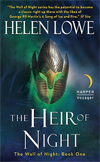
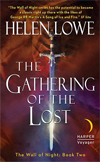


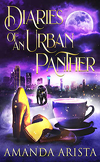
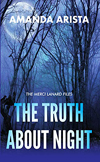

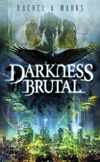
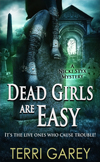
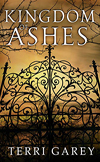
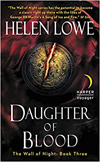
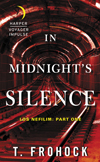
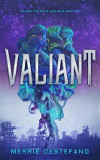
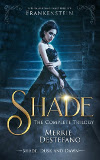

No comments:
Post a Comment